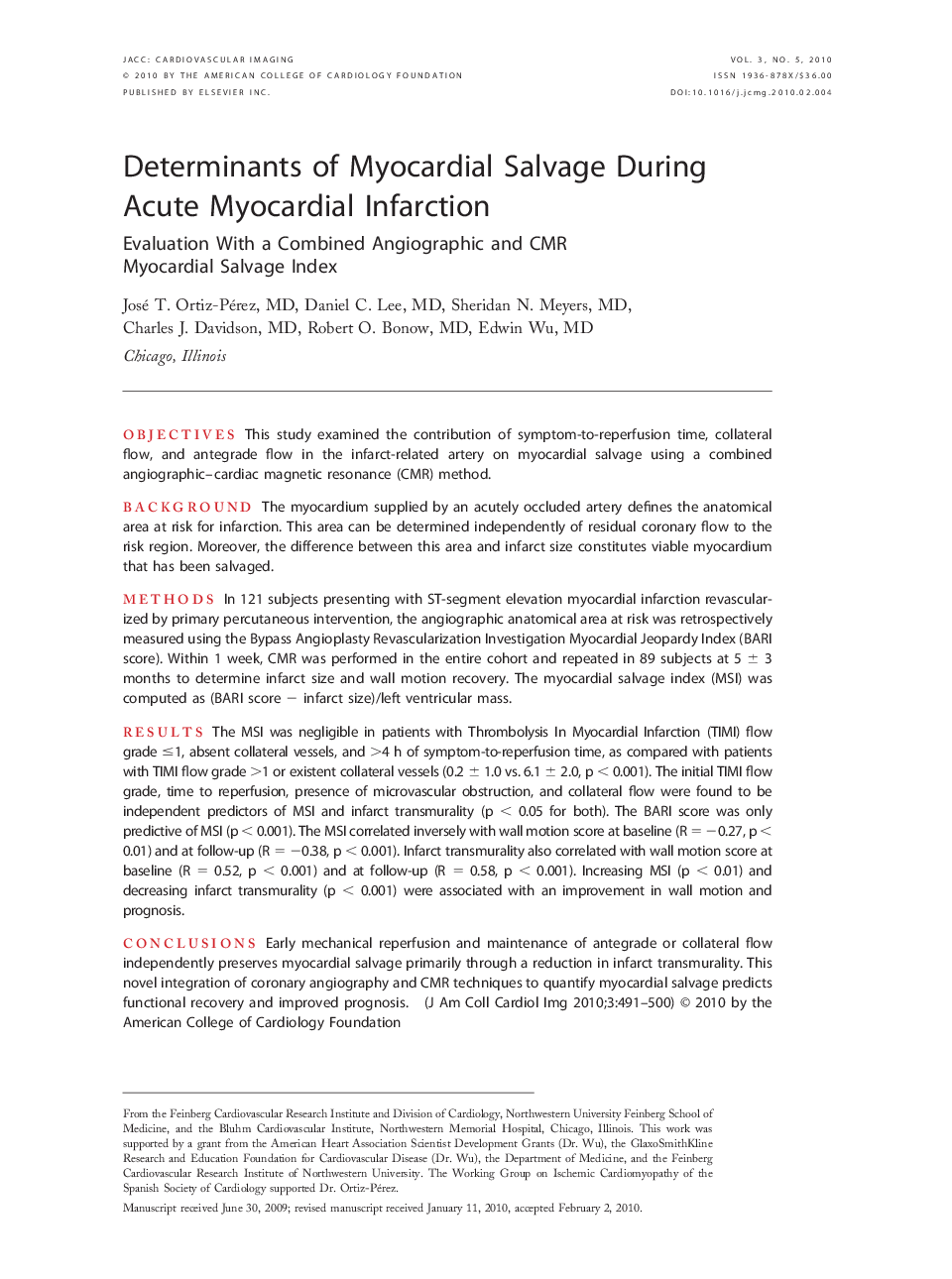| کد مقاله | کد نشریه | سال انتشار | مقاله انگلیسی | نسخه تمام متن |
|---|---|---|---|---|
| 2939140 | 1176974 | 2010 | 10 صفحه PDF | دانلود رایگان |

ObjectivesThis study examined the contribution of symptom-to-reperfusion time, collateral flow, and antegrade flow in the infarct-related artery on myocardial salvage using a combined angiographic–cardiac magnetic resonance (CMR) method.BackgroundThe myocardium supplied by an acutely occluded artery defines the anatomical area at risk for infarction. This area can be determined independently of residual coronary flow to the risk region. Moreover, the difference between this area and infarct size constitutes viable myocardium that has been salvaged.MethodsIn 121 subjects presenting with ST-segment elevation myocardial infarction revascularized by primary percutaneous intervention, the angiographic anatomical area at risk was retrospectively measured using the Bypass Angioplasty Revascularization Investigation Myocardial Jeopardy Index (BARI score). Within 1 week, CMR was performed in the entire cohort and repeated in 89 subjects at 5 ± 3 months to determine infarct size and wall motion recovery. The myocardial salvage index (MSI) was computed as (BARI score − infarct size)/left ventricular mass.ResultsThe MSI was negligible in patients with Thrombolysis In Myocardial Infarction (TIMI) flow grade ≤1, absent collateral vessels, and >4 h of symptom-to-reperfusion time, as compared with patients with TIMI flow grade >1 or existent collateral vessels (0.2 ± 1.0 vs. 6.1 ± 2.0, p < 0.001). The initial TIMI flow grade, time to reperfusion, presence of microvascular obstruction, and collateral flow were found to be independent predictors of MSI and infarct transmurality (p < 0.05 for both). The BARI score was only predictive of MSI (p < 0.001). The MSI correlated inversely with wall motion score at baseline (R = −0.27, p < 0.01) and at follow-up (R = −0.38, p < 0.001). Infarct transmurality also correlated with wall motion score at baseline (R = 0.52, p < 0.001) and at follow-up (R = 0.58, p < 0.001). Increasing MSI (p < 0.01) and decreasing infarct transmurality (p < 0.001) were associated with an improvement in wall motion and prognosis.ConclusionsEarly mechanical reperfusion and maintenance of antegrade or collateral flow independently preserves myocardial salvage primarily through a reduction in infarct transmurality. This novel integration of coronary angiography and CMR techniques to quantify myocardial salvage predicts functional recovery and improved prognosis.
Journal: JACC: Cardiovascular Imaging - Volume 3, Issue 5, May 2010, Pages 491–500